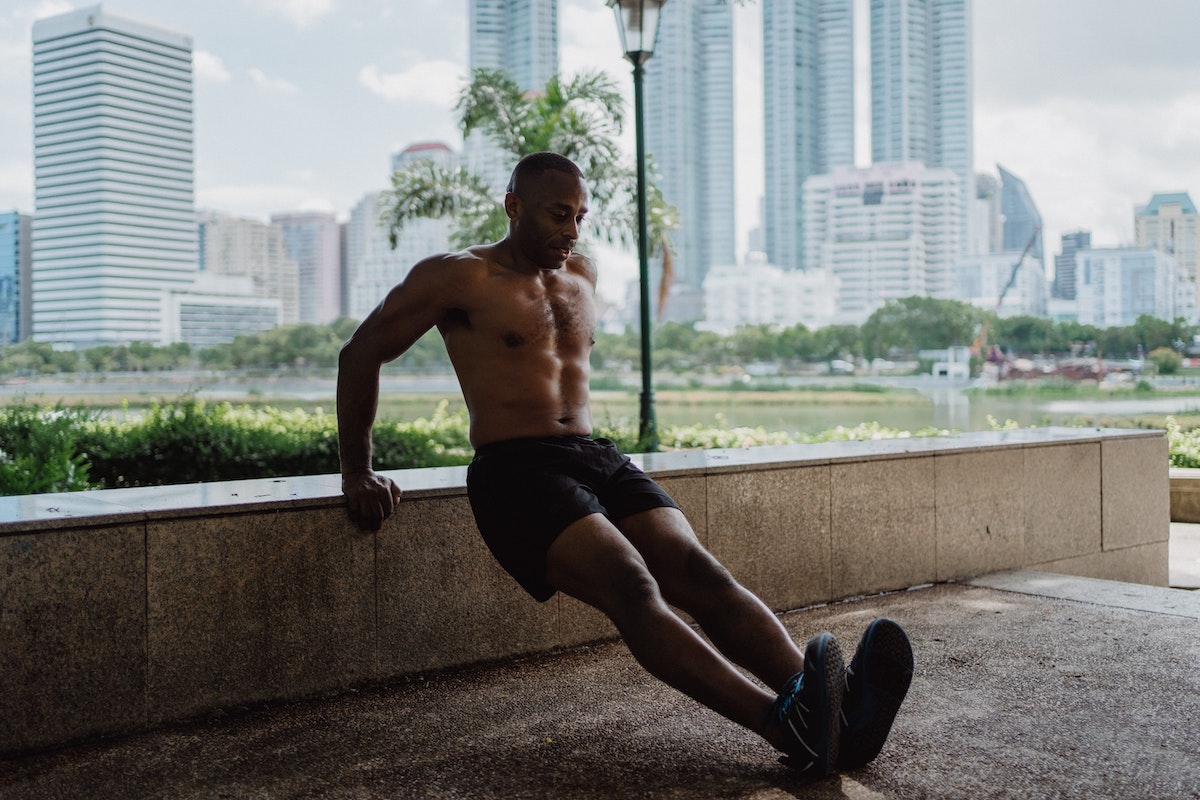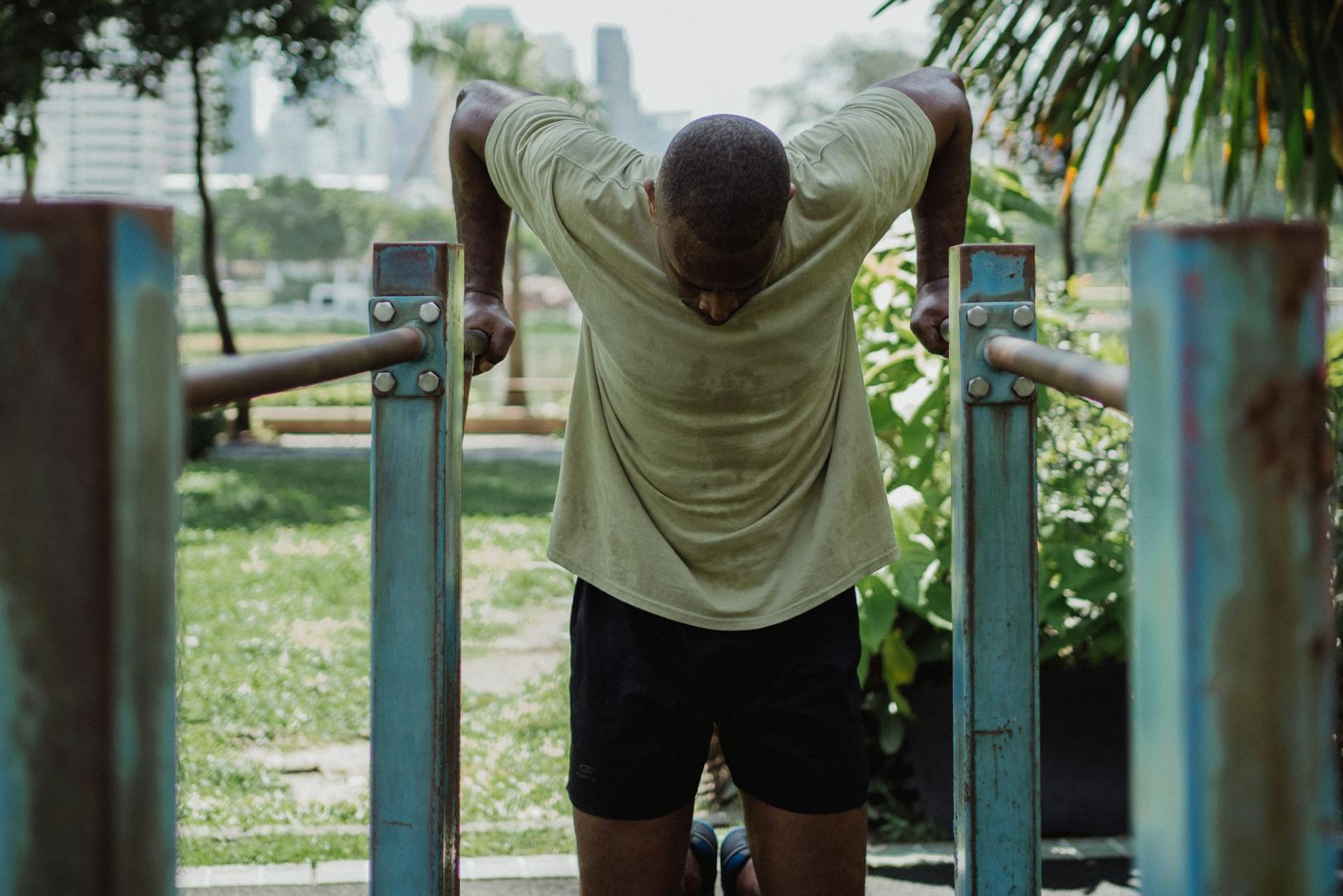When it comes to tricep exercises, tricep dips are the head honcho, and you don’t even need dumbbells. The tricep makes up a larger portion of your upper arm than the bicep, so it’s important to target the triceps during your workout routine if you want strong, bulging arm muscles. The tricep dip is a go-to exercise when you want to develop your upper body strength, swell those triceps, and improve your overall sports performance and functional activities. Here’s how to perfect your form so you can reap the benefits and lower your risk of injury.
What are tricep dips?

Tricep dips involve using the strength of your triceps and arm muscles to hoist your body weight up and down again. This compound exercise might also be called bodyweight dips or bench dips.
Over the years, exercise enthusiasts began performing tricep dips on chairs before moving to benches, boxes, and weight machines. This simple bodyweight exercise can give you massive gains as long as you perfect your form. Tricep dips are a compound exercise that targets multiple muscle groups at once without requiring a gym.
What muscles does the tricep dip work?

As the name suggests, tricep dips target all heads of your tricep muscles in your upper arms, particularly the long and lateral heads. They also target your trapezius muscles in your upper back and neck, your front deltoid shoulder muscles, and your core. Pressing movements like tricep dips engage your front deltoids, but it’s important you have proper form to avoid aggravating or injuring your anterior shoulder capsule. As you push your body weight upwards, you’re also working your pectoral muscles in your chest.
What are the benefits of the tricep dip?

Tricep dips are worth adding to your workout routine. Here are some of the many benefits of tricep dips:
- Add strength and muscle mass to your triceps, chest, and core
- Work multiple muscle groups simultaneously
- Improve your ability to lift yourself up and hold your own body weight
- Improve stability of your elbows and arm muscles
- Versatile compound bodyweight exercise that can be done almost anywhere
- No need for a gym membership
Tricep dips are a pushing or pressing exercise that helps you improve at other functional daily activities, such as using a lawnmower or pushing a shopping cart. If you don’t have gymnastic rings, a weight bench, a box, or a pull-up station, one or two sturdy chairs will do the trick.
How to perform the tricep dip

Here’s how to perform the tricep dip using the parallel bars on a dip machine:
- Stand between the parallel bars and grip the bars with your elbows bent.
- Lift your body up vertically while straightening your arms.
- Lower your body down with control by bending your elbows until your arms are roughly at a 90-degree angle and parallel to the floor. Avoid flaring out your elbows and try to keep them tucked in closer to your body.
- Try to keep your torso upright and your core engaged.
- Push down through your hands and lift your body back up again by straightening your arms.
- Repeat for your desired number of repetitions.
Tips to perfect your form

Here are some top tips for proper form:
- Try to avoid leaning forward too much, which makes the move more chest-dominant rather than the primary focus on the triceps and arms.
- Try to avoid dipping too low, especially at first.
- Hold the position at the bottom of the movement for just a moment before consciously contracting your muscles and engaging your core to lift yourself up.
- Try to keep your shoulders down and avoid tensing up with high shoulders.
- Start with 3 sets of 10 repetitions and increase your reps and sets over time.
According to the American Council on Exercise, those with shoulder problems might want to avoid tricep dips. The shoulder isn’t a true ball-and-socket joint like the hip; rather, it resembles a golf ball sitting on a tee and is more prone to injury. Exercises like dips and bench presses can create compression in the joint capsule, so it’s important you perfect your form and lower your risk of injury.
Variations

There are different variations of the tricep dip, including bench dips, chair dips, box dips, and ring dips. If you’d like to advance and level up, you can add weight, such as a dip belt. On the other hand, if you struggle with this exercise and can’t lift your entire body weight up, you can always try assisted dips with a machine instead. There’s also the tricep dip with bent knees, where you bend your knees during the movement instead of keeping your legs straight. Many exercise enthusiasts find bending your knees provides more support in this position and places less stress on your shoulder joints.
When performed properly, tricep dips are a superior exercise for amassing muscle and strength in your upper body and triceps.




